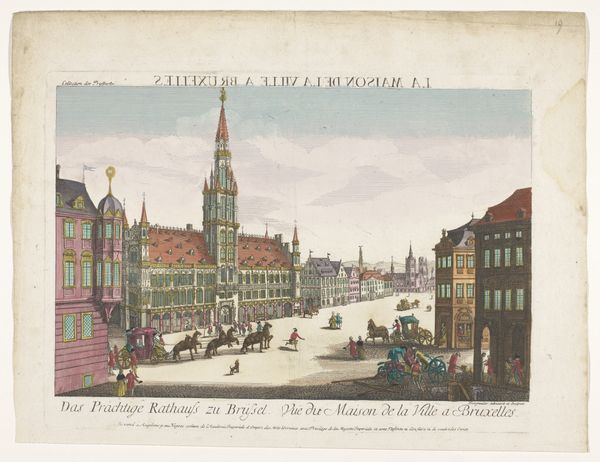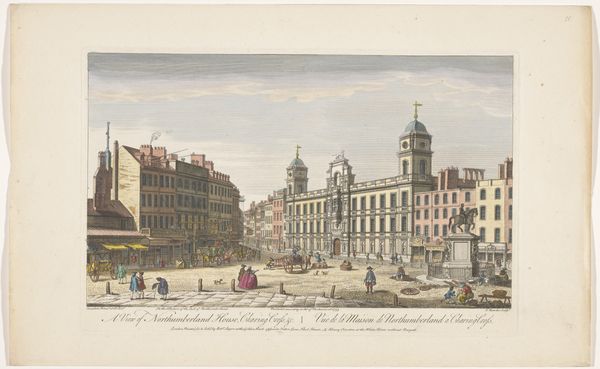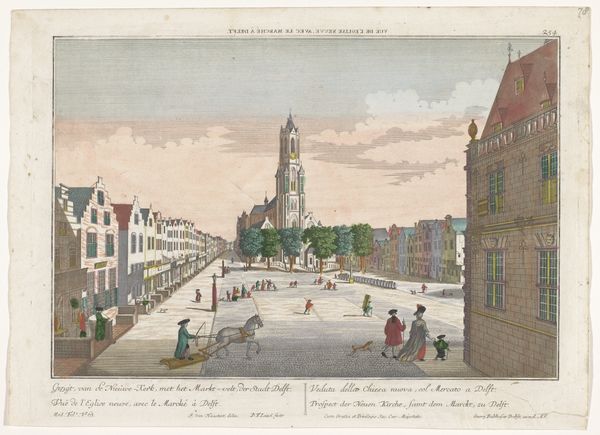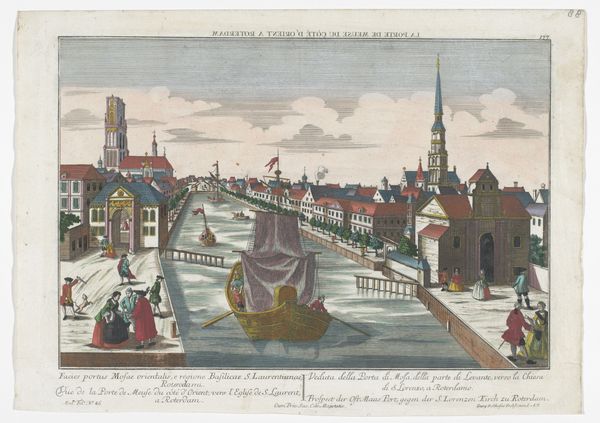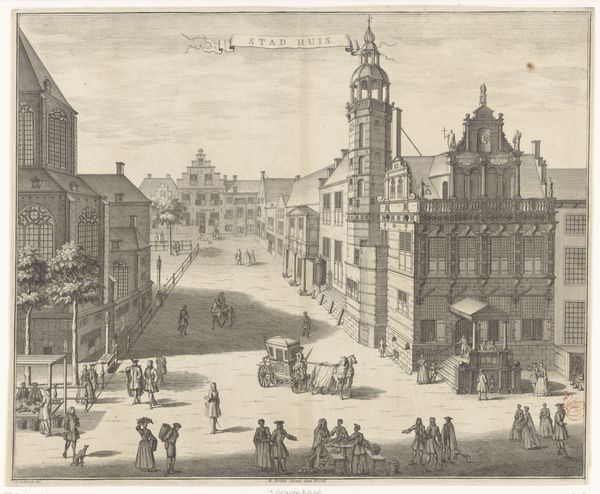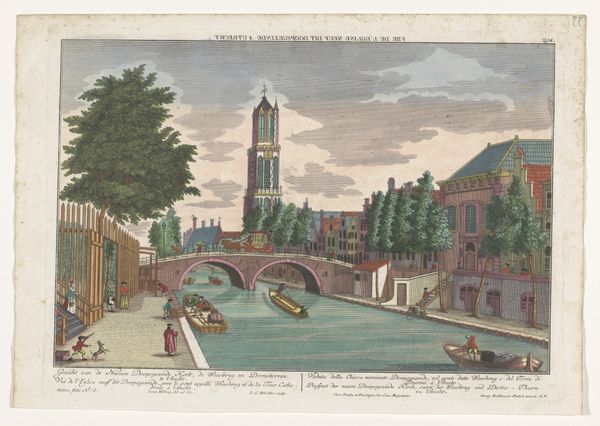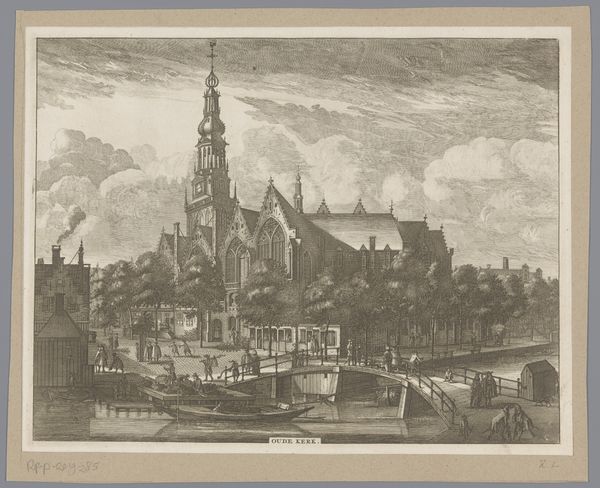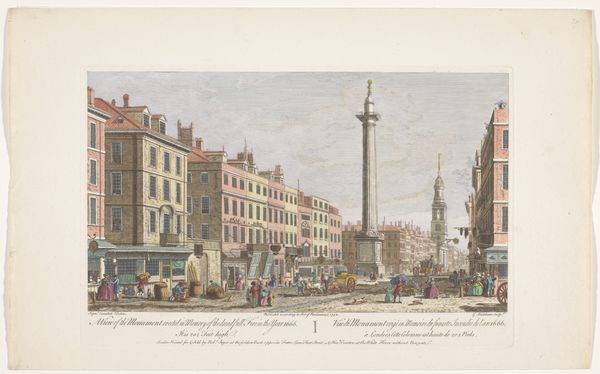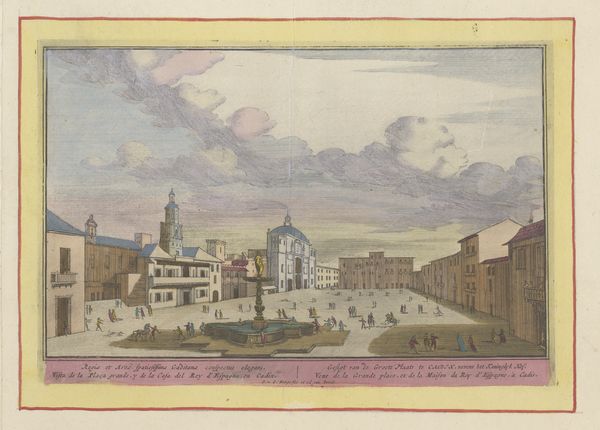
Gezicht op de Vismarkt te Utrecht, gezien richting het Stadhuis en de Domtoren 1742 - 1801
0:00
0:00
Dimensions: height 309 mm, width 430 mm
Copyright: Rijks Museum: Open Domain
Curator: This delightful print, titled "Gezicht op de Vismarkt te Utrecht, gezien richting het Stadhuis en de Domtoren", offers a captivating view of Utrecht's fish market. Created sometime between 1742 and 1801 by Georg Balthasar Probst, it presents a colourful cityscape rendered in watercolor. Editor: It strikes me as quite cheerful, doesn’t it? The pastel palette almost softens the hustle and bustle depicted. The towering Domtoren, dominating the skyline, provides a strong vertical counterpoint to the horizontal lines of the buildings and the bridge. Curator: Indeed. The Domtoren’s presence signifies more than just architectural prominence; it’s a beacon of civic and religious identity for Utrecht. Notice how Probst positions it deliberately behind the city hall, visually linking secular and ecclesiastical power. Editor: And look at the bridge itself—it acts almost like a stage, with its players enacting their daily roles. The figures are small, yet they embody the societal dynamism of Utrecht at that time. You see commerce, fashion, and maybe even social stratification at play. Curator: The genre-painting aspects cannot be overlooked. This image shows the cultural importance of market scenes, representing social customs, economic exchange, and community interaction in an era undergoing massive change. What stories do those exchanges tell? Editor: One also sees, looking closely, how idealized this portrayal might be. Yes, there's bustling commerce, but where is the grime, the odour, the realities of 18th-century urban life? Maybe Probst is crafting a narrative about a prosperous, orderly society. What is missing seems important too. Curator: Precisely. The medium—watercolor—adds to this gentle romanticism, a nostalgic vision of Utrecht perhaps meant for those who idealize city life, either for current audiences or those later who are recalling it. The image can also represent idealized civic duty that relates the city as a concept with high virtue. Editor: Reflecting on it, I'm struck by the enduring power of cityscapes to distill identity. It seems such images show not only where people lived but the shared values and aspirations embedded within urban culture. What a window this print offers us. Curator: Agreed, and exploring it today reminds us that even apparently simple images encode rich cultural memory, inviting continued interpretation.
Comments
No comments
Be the first to comment and join the conversation on the ultimate creative platform.


